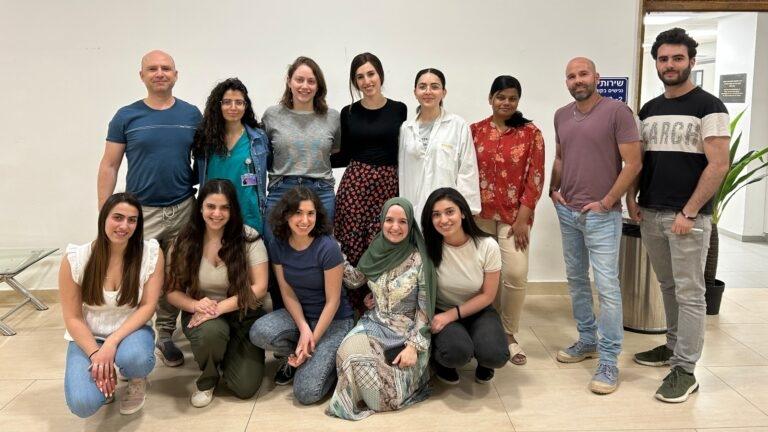Prof. Yosef Buganim (second from right) and his lab team at Hebrew University-Hadassah Medical School. Photo courtesy of Dr. Moriyah Naama
Breakthrough of vital importance for modeling and identifying potential risk factors for placental disorders and possible pregnancy therapeutics.
Placental disorders such as preeclampsia and intra-uterine growth restriction are commonly detected at late stages of pregnancy.
To understand what causes them, and identify risk factors and possible treatments, scientists have searched for a way to recreate early-stage placental cells in the lab.
“And that’s what we were able to do — and do it better than other methods that have recently been developed,” says Dr. Moriyah Naama.
She is an MD/PhD in the Hebrew University-Hadassah Medical School lab of Prof. Yosef Buganim, which specializes in reprogramming cells to study human disease and development.
“To really figure out diseases and their mechanisms and possible treatments, you have to know how they work — the exact molecular mechanisms and how they can be manipulated — and for that you need a good disease model,” she says.
“It is difficult for placental disorders because we didn’t have the human cells to model the diseases. Our system is a piece in the puzzle to do that.”
The study she led, published in Nature Communications, reveals a new method of reprogramming skin cells into human placental cells for research purposes. It works with skin cells from males or females of any age.
“In 2015, we figured out how to get these cells from mice, and that was a big breakthrough. Now we have developed this system in humans,” Naama tells ISRAEL21c.
